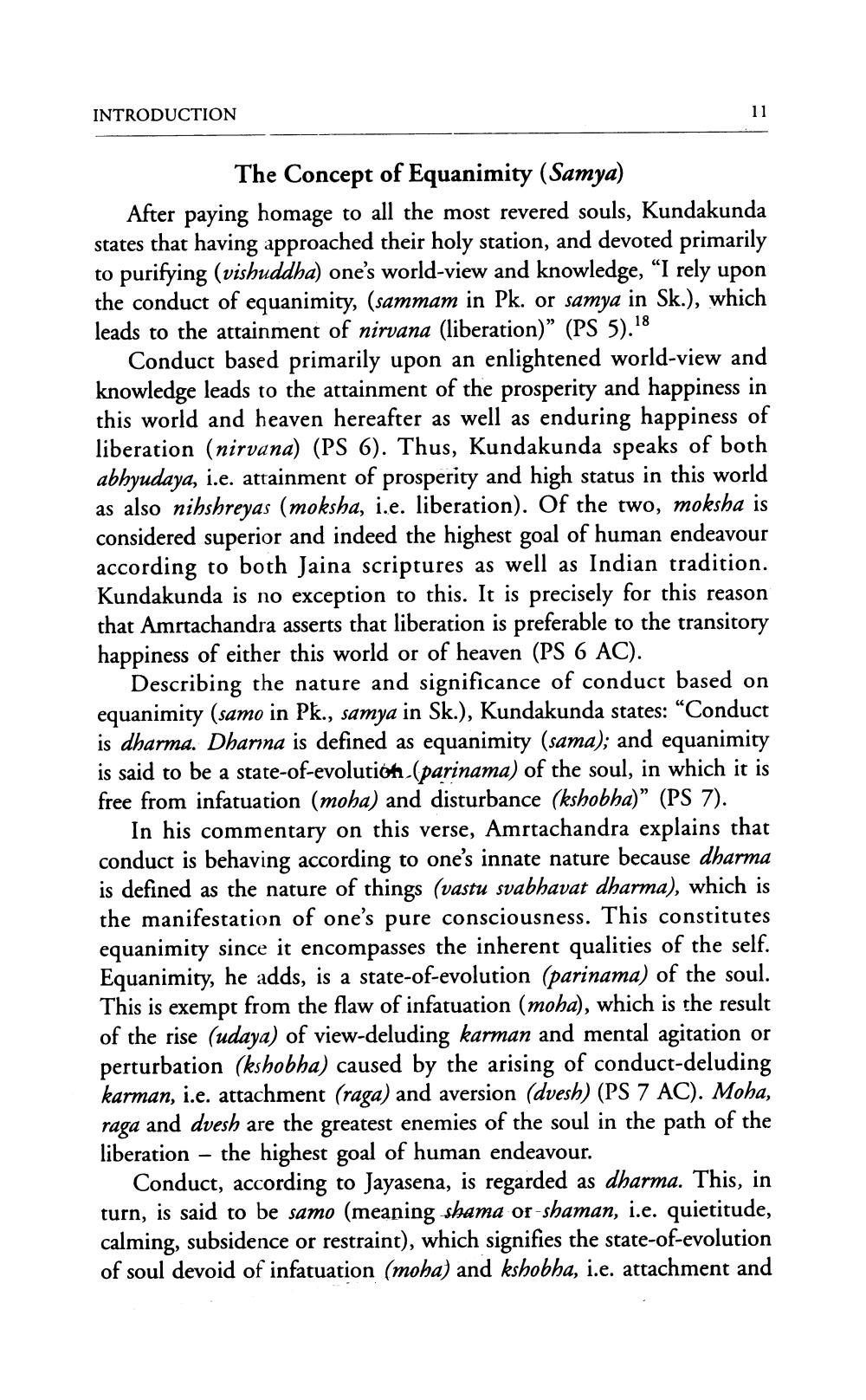________________
INTRODUCTION
11
The Concept of Equanimity (Samya)
After paying homage to all the most revered souls, Kundakunda states that having approached their holy station, and devoted primarily to purifying (vishuddha) one's world-view and knowledge, "I rely upon the conduct of equanimity, (sammam in Pk. or samya in Sk.), which leads to the attainment of nirvana (liberation)" (PS 5).18
Conduct based primarily upon an enlightened world-view and knowledge leads to the attainment of the prosperity and happiness in this world and heaven hereafter as well as enduring happiness of liberation (nirvana) (PS 6). Thus, Kundakunda speaks of both abhyudaya, i.e. attainment of prosperity and high status in this world as also nihshreyas (moksha, i.e. liberation). Of the two, moksha is considered superior and indeed the highest goal of human endeavour according to both Jaina scriptures as well as Indian tradition. Kundakunda is no exception to this. It is precisely for this reason that Amrtachandra asserts that liberation is preferable to the transitory happiness of either this world or of heaven (PS 6 AC).
Describing the nature and significance of conduct based on equanimity (samo in Pk., samya in Sk.), Kundakunda states: "Conduct is dharma. Dharma is defined as equanimity (sama); and equanimity is said to be a state-of-evolution (parinama) of the soul, in which it is free from infatuation (moha) and disturbance (kshobha)" (PS 7).
In his commentary on this verse, Amrtachandra explains that conduct is behaving according to one's innate nature because dharma is defined as the nature of things (vastu svabhavat dharma), which is the manifestation of one's pure consciousness. This constitutes equanimity since it encompasses the inherent qualities of the self. Equanimity, he adds, is a state-of-evolution (parinama) of the soul. This is exempt from the flaw of infatuation (moha), which is the result of the rise (udaya) of view-deluding karman and mental agitation or perturbation (kshobha) caused by the arising of conduct-deluding karman, i.e. attachment (raga) and aversion (dvesh) (PS 7 AC). Moha, raga and dvesh are the greatest enemies of the soul in the path of the liberation the highest goal of human endeavour.
Conduct, according to Jayasena, is regarded as dharma. This, in turn, is said to be samo (meaning shama or shaman, i.e. quietitude, calming, subsidence or restraint), which signifies the state-of-evolution of soul devoid of infatuation (moha) and kshobha, i.e. attachment and




